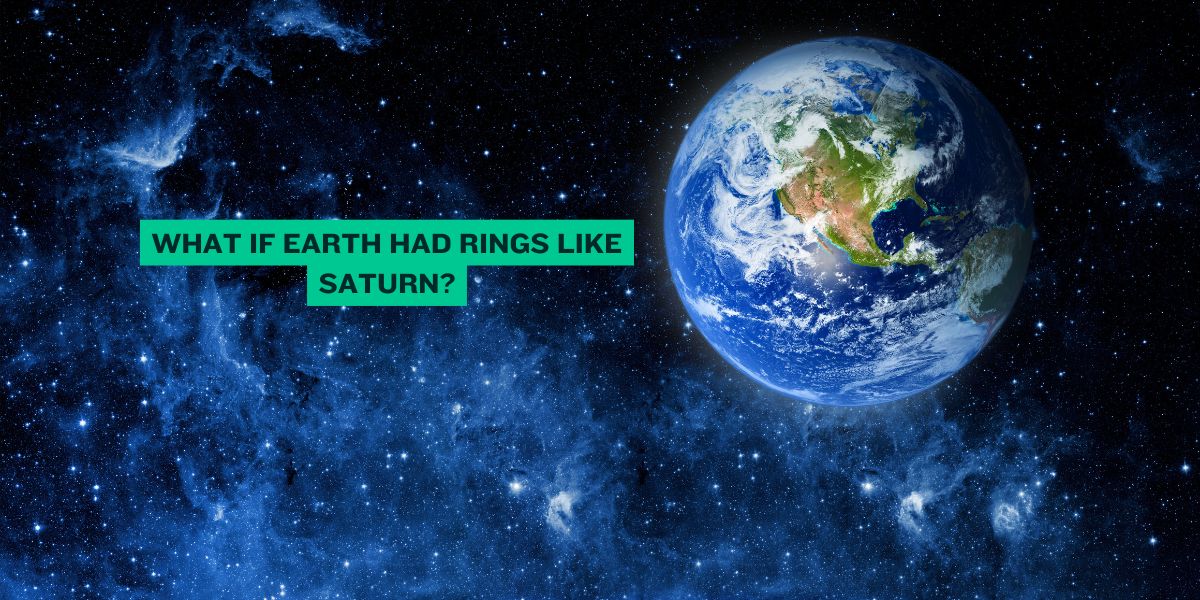Imagine looking up at the sky and seeing huge, shiny rings around Earth, just like Saturn! How amazing would that be? The sky would look different every day. The rings might glow at night or cast shadows during the day. It would be like living inside a sci-fi movie!
Saturn’s rings are made of ice, rocks, and dust. If Earth had rings, they would probably be made of similar things. But how would these rings change our world? Would they affect the weather, animals, or even our daily lives?
What do you think—would you love or hate having rings around Earth?
What Would Earth’s Rings Look Like From the Ground?
If Earth had rings, they would look different depending on where you live.
- Near the equator, the rings would look like a thin line across the sky.
- Close to the poles, they would look like a giant arch stretching from one horizon to the other.
- The rings would shine brightly because they would reflect sunlight, just like the Moon.
At night, the rings might glow, making nights much brighter. During the day, they could create cool shadows, like a natural umbrella!
Fun Fact: If Earth had rings, they would be much closer than Saturn’s rings, so they would look bigger and more detailed!
How Would Earth’s Rings Affect Day and Night?
The rings would block some sunlight, making certain areas cooler.
- Shadows: The rings could cast long shadows, making some places darker during the day.
- Temperature: Areas under the rings might stay cooler, while other places would stay warm.
- Sunrises & Sunsets: The sky would look even more colorful, with the rings reflecting light in different ways.
However, too much shadow could affect plants and animals. Some creatures that need sunlight might struggle to survive.
Would Earth’s Rings Affect Space Travel?
Yes! Space missions would have to be planned carefully.
- Rockets would have to fly through gaps in the rings to avoid crashing into rocks and ice.
- Satellites might get damaged if they hit ring debris.
- Astronauts would have an amazing view, but spacewalks could be riskier.
Scientists would need to find safe paths for rockets, just like ships avoid icebergs in the ocean.
Could the Rings Fall on Earth?
Over millions of years, small pieces of the rings could fall as “ring rain.”
- Tiny ice and rock particles would burn up in the atmosphere, creating shooting stars every night!
- Bigger chunks might reach the ground, but this would be very rare.
Luckily, this would happen very slowly, so we wouldn’t need to worry about giant rocks falling from the sky!
Would the Rings Affect Animals and Nature?
Animals that rely on moonlight might get confused.
- Nocturnal animals (active at night) might struggle if the rings make nights too bright.
- Birds that migrate using stars could get lost if the rings block their view.
- Plants might grow differently in areas with more or less sunlight.
Nature would adapt, but some animals might need time to get used to the change.
Could Humans Build on the Rings?
Maybe in the future!
- Space stations could float near the rings, giving scientists a close-up view.
- Mining robots might collect ice and metals from the rings for resources.
- Tourism would boom, people would pay to see Earth’s rings up close!
However, building on the rings would be very difficult because of floating rocks and dust.
Conclusion
If Earth had rings like Saturn, our world would look magical! The sky would be more beautiful, but life might also get a little harder. Nights would be brighter, space travel would be trickier, and nature would need to adjust. Still, it’s fun to imagine how different—and amazing—our planet would be.
What would you do first if Earth had rings? Look up at the sky or plan a trip to space?
📌 Frequently Asked Questions
Can Earth ever get rings like Saturn?
It’s very unlikely. Earth doesn’t have enough ice and rocks nearby to form rings. Saturn’s rings came from broken moons or comets, but Earth’s gravity would pull debris down.
Would the rings block the Sun?
Partly. The rings would cast shadows, but not enough to block all sunlight. Some places might get less light, though.
How close would the rings be to Earth?
Earth’s rings would likely be much closer than Saturn’s—maybe just a few thousand miles above us.
Would the rings affect the Moon?
No, the Moon is too far away. The rings would stay near Earth and not interfere with the Moon’s orbit.
Could we destroy the rings if we didn’t like them?
Not easily. The rings would be made of millions of rocks and ice chunks, destroying them would take enormous energy.
Would airplanes hit the rings?
No, planes fly too low. The rings would be much higher, where satellites orbit.
Would the rings make Earth colder?
A little. The shadows might cool some areas, but not enough for an ice age.
Could we mine the rings for resources?
Yes! Future robots might collect water ice and metals from the rings.
Would the rings look colorful?
Yes! Sunlight would reflect off the ice, creating rainbow-like effects.
Did Earth ever have rings in the past?
Some scientists think a young Earth might have had temporary rings after big asteroid hits, but they didn’t last long.
